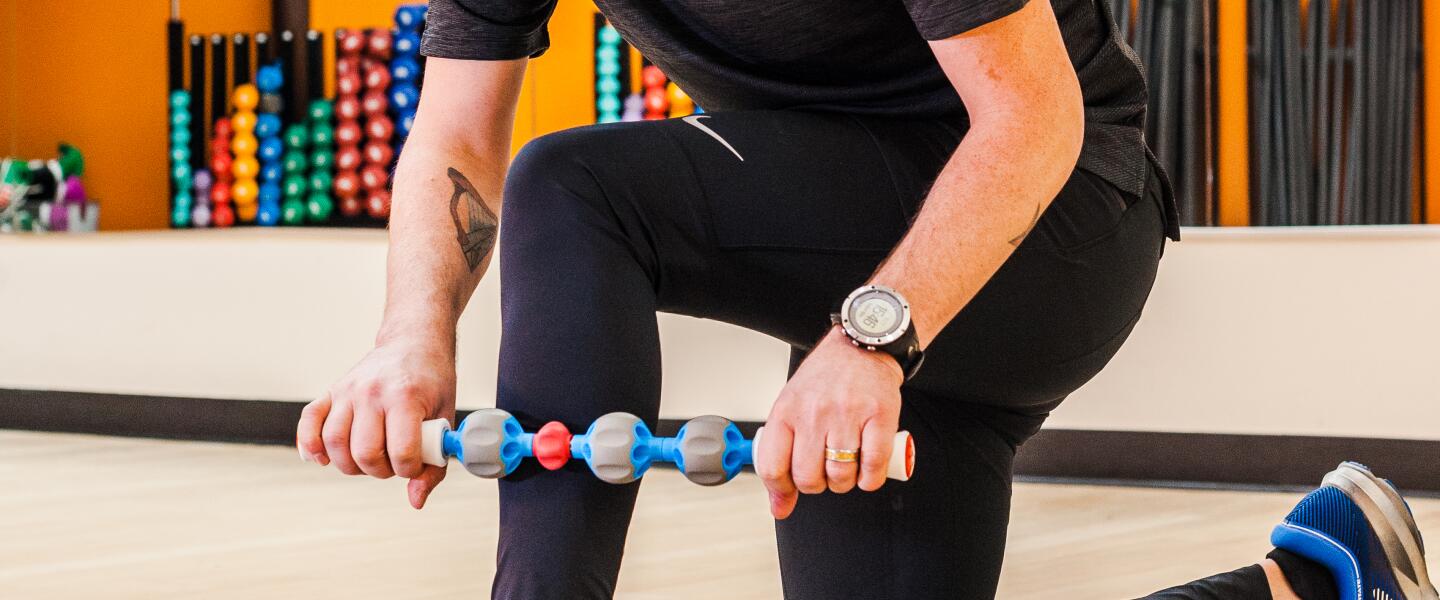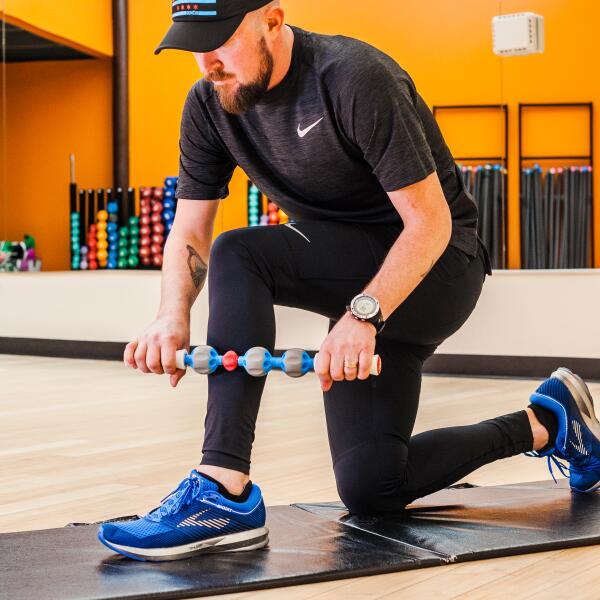
Be your own personal masseuse with a massage stick.
If you're like any of our staff, you have a spot at home where you keep all of your running goodies: foam rollers, massage sticks, massage balls, compression sleeves, insoles, and even a stash of nutrition. A 'runner's tool kit', if you will.
Foam rollers are great for your back, quads, and hamstrings because it allows you to use your body weight to your advantage and apply great amounts of pressure to break up dense muscle tissues that may be causing you problems. But foam rollers are limited by their large size.
Foam Rolling: What It Does, Example Exercises, and When to Go to the Doctor
Foam rolling. Everyone's doing it. Elite athletes and runners are swearing by them, non-runners are even finding out the benefits of them, and this woman from Self Magazine even said her life will never be the same since she took a foam rolling class. It's 2018 and there's no denying that foam rolling works.
That's where massage rollers come into play.
What is a massage stick or roller?
A massage roller is a handheld massage device used to break up obstructed muscle tissue, which helps blood flow and helps facilitate the healing response. Massage rollers can come in many shapes and sizes. The most common, is the massage stick, usually covered in plastic, rubber, or foam "gears" or "wheels" for increased massage precision. TriggerPoint even makes a specific roller for your foot.
What do massage sticks and rollers do?
Across the board, from foam rollers, to massage sticks and massage balls, the concept is the same. In short, they help with elasticity and flexibility back into the body, which can help improve range of motion, help reduce muscle soreness, and prevent extra stress and strain placed on the body that can lead to overuse injuries.
What areas of the body do massage sticks and rollers help the most?
Massage sticks and rollers are similar in that they are both beneficial in massaging the same areas, but there's one main difference. Massage sticks and rollers are handheld, making them great at pinpointing specific, smaller muscle groups. Since you have complete control in your hands, you can adjust the pressure easily and roll laterally.
Here are the best areas to pinpoint with a massage stick or roller.
Adductors (Inner Thigh): When we think of leg muscles, we think quads and hamstrings. The Adductor group is a set of muscles inside of the leg and play a pivotal role in the stabilization of the legs and pelvis.
Shins: We usually think of the shin as a bony place, but in fact there is a good-sized muscle on the lateral face of the shin. Massaging this space regularly can help prevent the onset of shin splints. If you have been diagnosed with shin splints, please advise with your doctor on how you should be massaging.
IT Band (Outer Thigh): The iliotibial band runs along the lateral or outside aspect of the thigh, from the pelvis to the tibia, crossing both the hip and knee joints. The iliotibial band is an important stabilizer structure of the lateral part of the knee as the joint flexes and extends. Inflammation and irritation can occur as it travels back and forth. Too much of this motion and overuse of the IT Band can cause Iliotibial band syndrome.
Plantar fasciitis: Plantar fasciitis is one of the most common causes of heel pain. It involves inflammation of a thick band of tissue that runs across the bottom of your foot and connects your heel bone to your toes. While a stick isn't optimal for treating this pain, TriggerPoint makes a specific product for this, the NANO Foot Roller, which we'll take a look at below.
When is the best time to use a massage roller?
Pre-workout: It's always beneficial to roll out with stick using a wide, loose grip before a run to warm up the muscles, don't apply too much pressure and don't pinpoint any muscle groups.
Post-workout: After your workout your muscles will be adequately warmed up. This is the time to tighten your grip on your massage stick and pinpoint those smaller muscle groups using lateral and up-and-down movements. We'll look at some example exercises below.
What are some example exercises using a massage stick and massage roller?
The following are specific videos on how to target muscle groups. There's just one rule of thumb: slow down when applying a lot of pressure and feel free to speed up when the pressure is light.
How to massage the adductor muscles using an Addaday Type A massage stick, using a wide grip. Here are alternative grips and motions to massage the adductor muscles
How to massage the shins using an Addaday Type A massage stick, using a wide grip. Here are alternative grips and motions to massage the shins.
How to massage the IT Band using an Addaday Type A massage stick, using a wide grip. Here are alternative grips and motions to massage the IT Band.
How to massage the foot for plantar fascitiis relief using the TriggerPoint NANO Foot Roller.
Are the more expensive massage sticks worth the money over a cheaper alternative?
Yes, you shouldn't be able to bend the massage stick. Cheaper alternatives are typically made of plastic and bend, meaning you won't be able to get as deep of a massage. Addaday and Triggerpoint, the two brands you'll find in our stores, use a steel bar. On top of the steel bar, Addaday's rollers are covered with their patented rubber knobs and gears designed for kneading.
What is the difference between tightness/pain and injury/pain?
The next two questions were the most common questions our social media followers asked us. To answer it, we reached out to the professionals at Aligned Modern Health. According to Vince Roberts, Director of Physical Medicine, there are two things to consider when it comes to pain. Quality and intensity.
The pain of training hard or dealing with minor tissue stresses is one of a dull soreness or ache, and it usually will dissipate within a short period of time (1-3 days). These symptoms will usually be rated at less than 5 out of 10 for intensity, although all people vary in their experience of pain.
The pain of injury is most often one of sharpness, stabbing or even a burning sensation that does not dissipate easily and could last days to weeks. These symptoms will usually be more intense, being rated more in the 5-10 out of 10 pain intensity.
When should I see a professional?
According to Roberts, when the signs are there – sharp or burning pain that interferes with normal functional recreation, often with an intensity rating of 5+ out of 10, is a good time to stop what you’re doing and get it evaluated.
We all want to get back to running sooner, so don’t let injuries fester or stick around too long; a visit to the doctor can reveal a lot of things you’re unaware of. Understanding an issue’s cause, and not just the pain that arises as a result, can lead to quick recovery times and less risk for future injury.

Connect With Us
See the latest from Fleet Feet Chicago